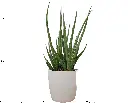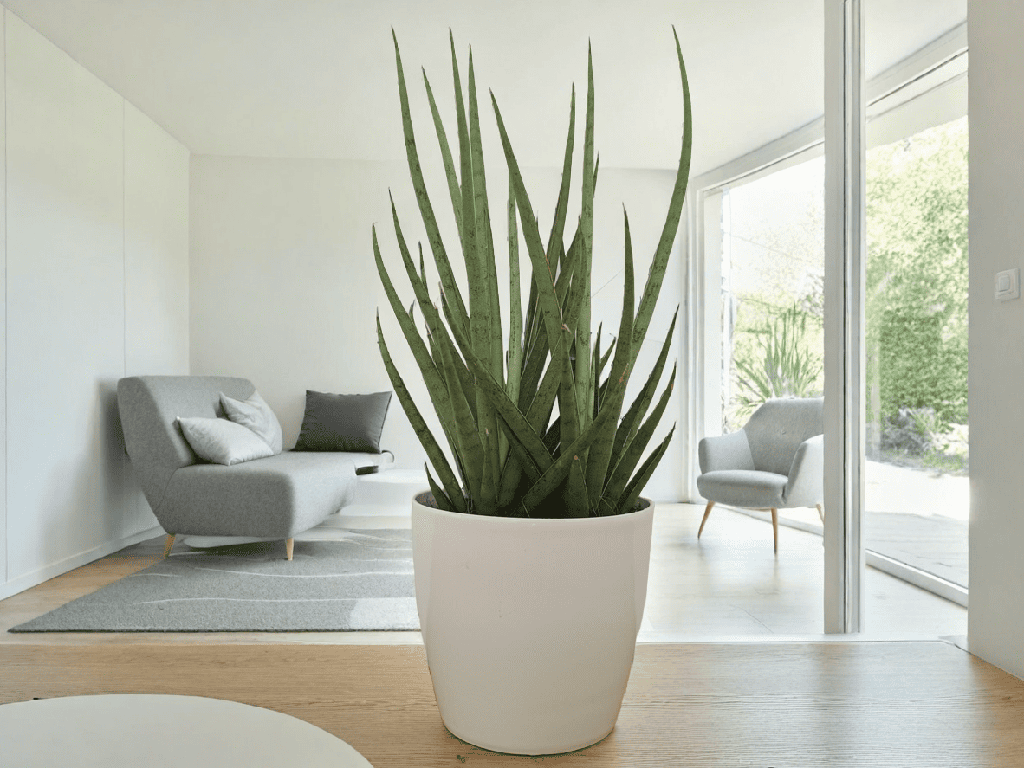Product Specifications
The Snake Plant (Sansevieria trifasciata), also commonly known as Mother-in-Law's Tongue, is a popular houseplant admired for its upright, sword-like leaves that are often dark green with lighter green, yellow, or white edges. The plant’s architectural shape makes it a great addition to modern interior designs. Reaching heights of up to 3-4 feet, this plant can grow both indoors and outdoors (in warmer climates), where it serves as a beautiful and striking focal point. It is well-known for being incredibly hardy and adaptable, tolerating low light, poor soil, and infrequent watering.
1. Air Purification: The Snake Plant is one of the best houseplants for improving indoor air quality. It helps filter toxins like formaldehyde, benzene, and xylene from the air and even releases oxygen at night, making it a great choice for bedrooms.
2. Low Maintenance: It requires little attention and can thrive in both bright and low light, making it ideal for busy or forgetful plant owners.
3. Aesthetic Appeal: Its bold, upright leaves make it a stylish and modern plant, often used to add greenery to interior spaces.
4. Health Benefits: The air-purifying properties of the Snake Plant can promote better indoor air quality, potentially improving sleep and reducing allergens.
1. Watering: Water sparingly, about once every 2-4 weeks. Allow the soil to dry out completely between waterings to avoid root rot.
2. Light: Snake Plants prefer indirect sunlight but can tolerate low-light conditions as well as some direct sunlight.
3. Soil: Use well-draining, sandy soil or cactus potting mix.
4. Temperature: It prefers temperatures between 60°F and 85°F (15°C to 29°C). Keep away from drafts or cold temperatures below 50°F (10°C).
5. Humidity: Thrives in average indoor humidity but can also tolerate dry air.
Ques 1: Does it require direct sunlight?
Answer: Snake Plants thrive in indirect sunlight but can tolerate low light and occasional direct sunlight.
Ques 2: How does the Snake Plant purify air indoors?
Answer: Snake Plants remove toxins such as formaldehyde and benzene from the air, improving air quality.
Ques 3: Can it survive long periods without water?
Answer: Yes, it is drought-tolerant. Water only when the soil is completely dry, typically once every 2–3 weeks.






